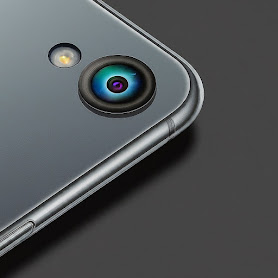Fuzzy Logic in Consumer Electronics
Fuzzy logic has become an integral part of modern consumer electronics, making everyday devices smarter, more efficient, and easier to use. By enabling machines to make decisions based on imprecise inputs, fuzzy logic allows for a more human-like interaction with technology. Let's explore how fuzzy logic is applied in various consumer electronics.
1. Fuzzy Logic in Washing Machines.
 |
| fuzzy Logic in a Washing Machine Control Panel |
One of the most well-known applications of fuzzy logic in consumer electronics is in washing machines. Traditional washing machines operate based on preset cycles that don’t adapt to the specific load. However, washing machines equipped with fuzzy logic can adjust their operation dynamically.
Load Detection: Fuzzy logic allows the washing machine to detect the size and weight of the load. It uses sensors to measure the water absorption, and based on this, it adjusts the water level and washing time.
Dirt Detection: Some advanced machines can even detect the dirtiness of the clothes using sensors. The machine then decides the appropriate amount of detergent and the length of the washing cycle.
Energy Efficiency: By optimizing water usage and washing time, fuzzy logic helps in reducing energy consumption, making the washing process more environmentally friendly and cost-effective.
2. Fuzzy Logic in Air Conditioners.
Air conditioners that use fuzzy logic provide a more comfortable environment by adjusting the cooling process based on various factors, such as room temperature, humidity, and occupancy.
 |
| A Vintage Air Conditioner Unit, with a sleek design and Energy efficient Feature. |
Temperature Control: Traditional air conditioners switch between on and off states to maintain the desired temperature. However, fuzzy logic air conditioners continuously adjust the cooling power to maintain a consistent and comfortable temperature without frequent cycling.
Humidity Control: Fuzzy logic systems can also regulate humidity levels in the room, enhancing comfort, especially in regions with high humidity.
Energy Savings: By avoiding frequent start-stop cycles and optimizing the cooling process, fuzzy logic air conditioners consume less energy, leading to lower electricity bills.
3. Fuzzy Logic in Refrigerators.
 |
| Fuzzy Logic in Smart Fridge. |
Refrigerators have also benefited from the integration of fuzzy logic, which helps in maintaining optimal temperature and humidity levels for different types of food.
Adaptive Cooling: Fuzzy logic allows the refrigerator to adjust cooling levels based on the amount of food stored, the frequency of door openings, and external temperature conditions. This ensures that food stays fresh longer while conserving energy.
Defrosting: Some refrigerators use fuzzy logic to determine the optimal defrosting schedule, reducing frost buildup without wasting energy.
4. Fuzzy Logic in Microwaves.
Digital cameras use fuzzy logic to improve image quality and enhance the user experience.
Auto-Focus: Fuzzy logic helps the camera determine the best focus point by analyzing various elements in the scene, such as contrast and lighting. This results in sharper, clearer images.
Exposure Control: Cameras with fuzzy logic can adjust exposure settings dynamically based on the lighting conditions, ensuring that photos are neither too bright nor too dark.
Face Detection: Fuzzy logic enhances face detection algorithms, making it easier for cameras to identify and focus on faces, even in challenging lighting conditions.
Conclusion.
Fuzzy logic has transformed consumer electronics by enabling devices to adapt to real-world conditions in ways that were previously impossible. From washing machines to cameras, fuzzy logic makes everyday tasks simpler and more efficient, providing users with a seamless experience. As technology continues to advance, we can expect to see even more innovative applications of fuzzy logic in consumer electronics, further enhancing our interaction with the devices we use daily.
 |
| Fuzzy Logic in Smartphone Camera |





2 Comments
Awesomely made brother 🎉 super blog bhai 😎 with
ReplyDeleteThank you Bhai 👍
ReplyDelete